Gradient Matter is an emerging ideas-driven multidisciplinary design studio founded by Andrei Hakhovich. The studio’s work is focusing on production of environments, scenarios and digital crafts which are highly specialized, engaging, ecological, performative and have a sensorial impact on users.
In my design process, rather than being descriptive, I create a constrained system with feedback loops that could be adjusted and changed. Constraints like usability, cost of manufacturing, site, requirements of user’s structural and environmental performance evolve designs rather than representational sketches. I see the role of the designer change towards the mediator of effects, gradients, variation, and creator of sets of rules rather than mere representation. I produce a set of atmospheres, relationships, material effects, and ultimately create new opportunities.
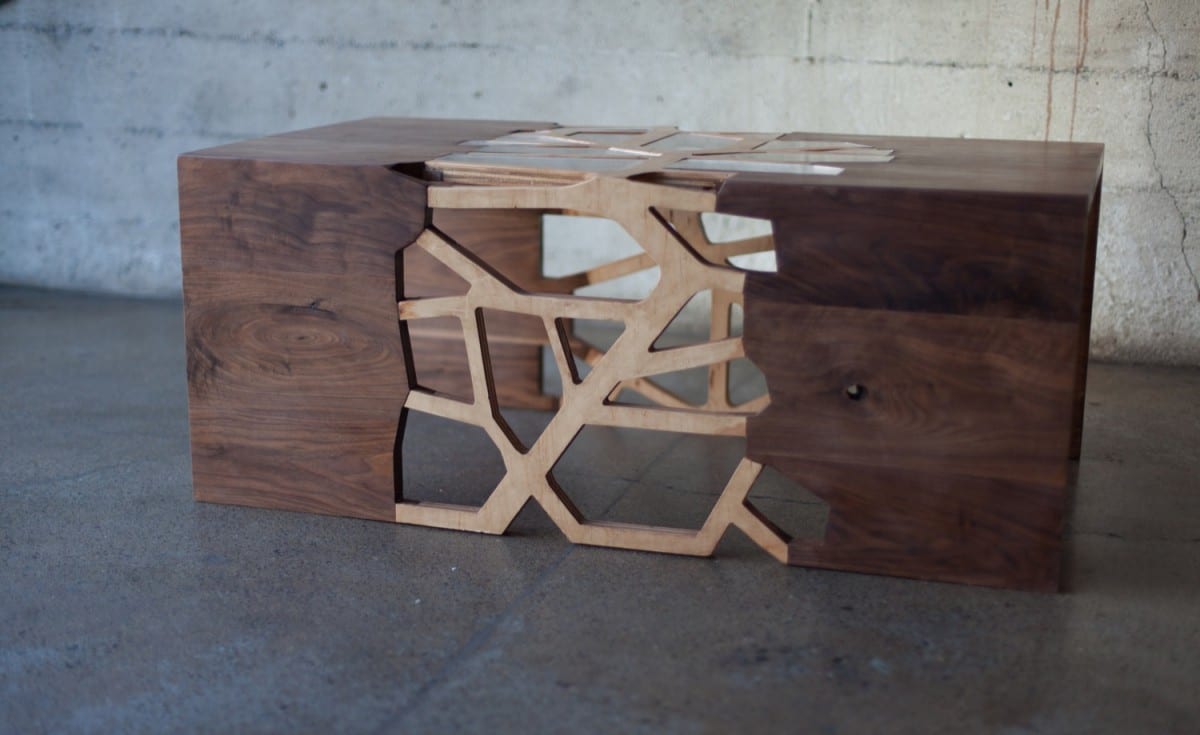
In creating my recent work Branching Table, I thought about the relationships of one person to another as they would sit across from each other, their tension, attraction, repulsion, connection. I wanted to reveal it, and had a desire to map the unseen.
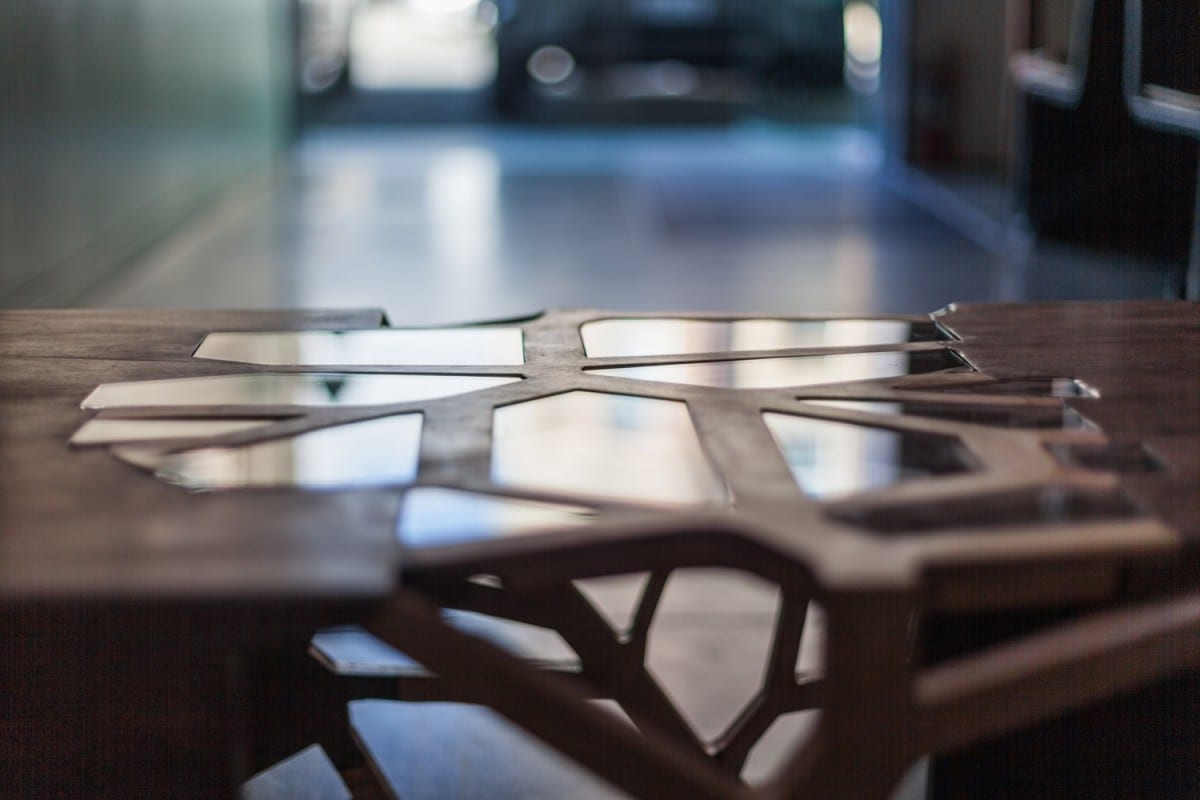
A part of the table geometry was inspired by the growing forces in trees and traditional Japanese joinery.
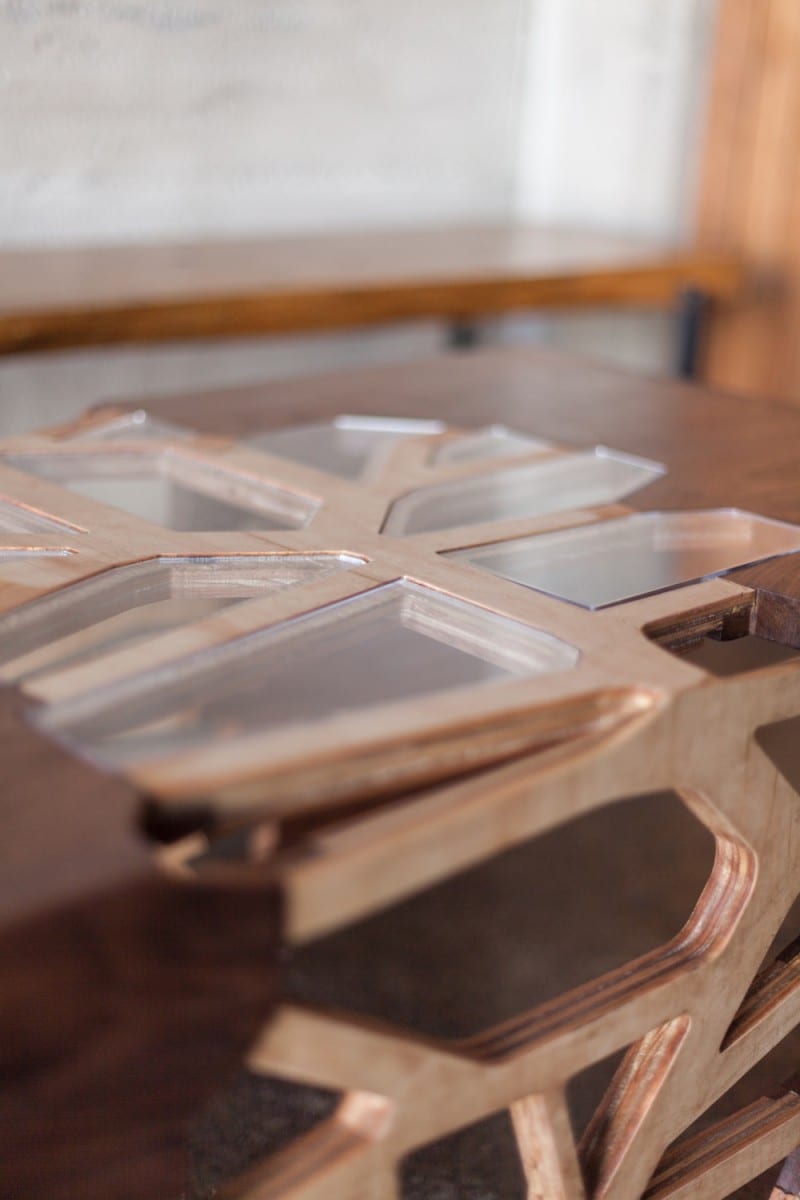

©gradient matter
Wood performance differs along the grain direction, and I made it one of the parameters during design process.
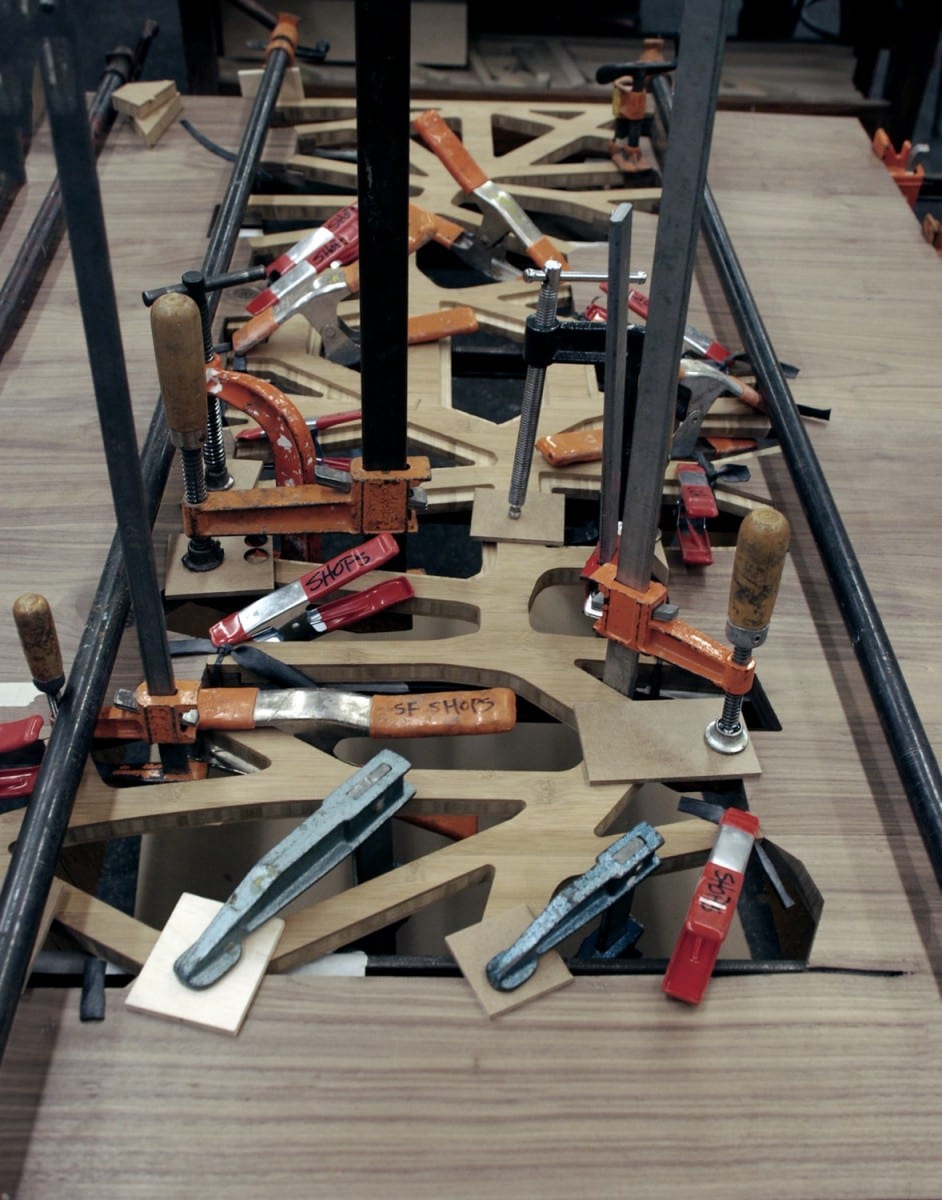
I engaged the ancient craft techniques with modern manufacturing methods.

I use small-scale work like furniture and installations as research and testing grounds for some ideas that will later be translated or incorporated into a large-scale work. I find working across multiple scales very satisfying. I also like getting away from the computer and getting my hands dirty. I often experiment with different materials, and research their properties to identify their strengths and limitations. All of the findings are carefully analyzed and reflected in my final design implementation.
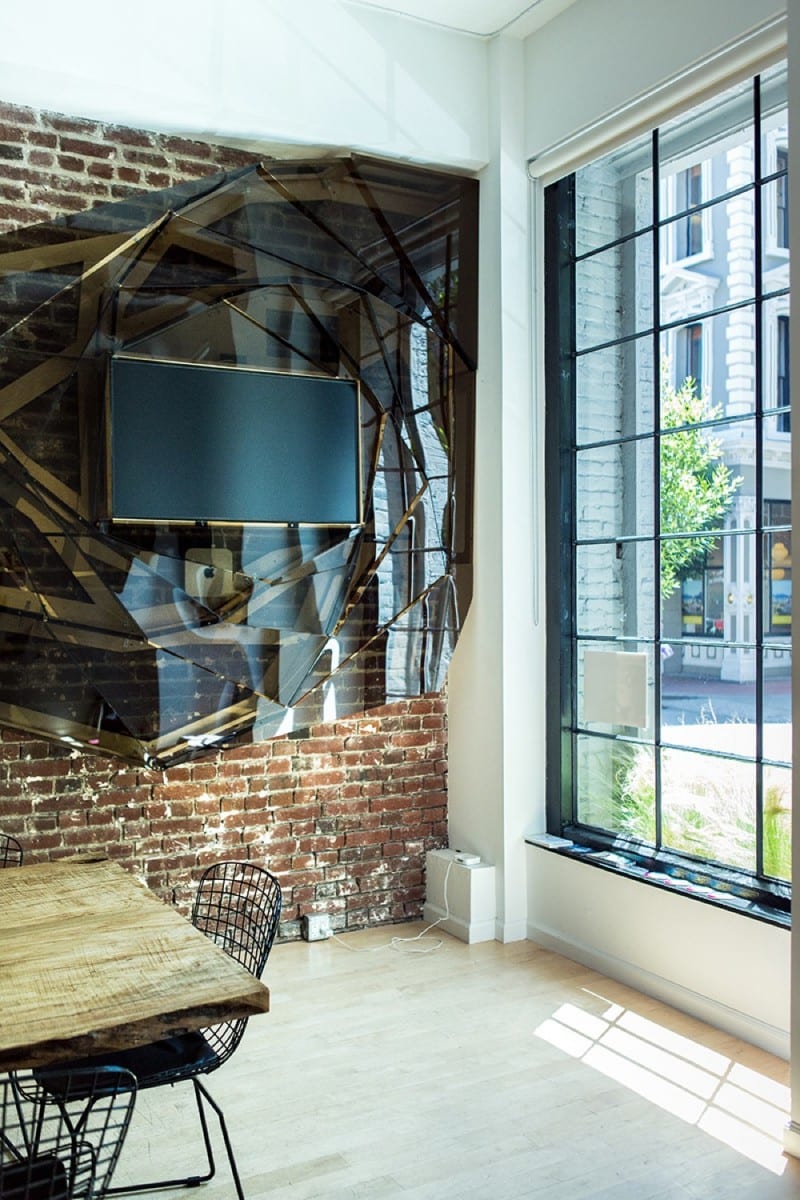
One of my recent projects is called Vorticity which is a large-scale interior installation for the office of a creative digital agency in downtown San Francisco. The installation operates under the guise of perception by altering one’s awareness via modes of reflection and integration. The installation focuses the gallery visitor’s attention on three main display screens that highlight the work of the agency.
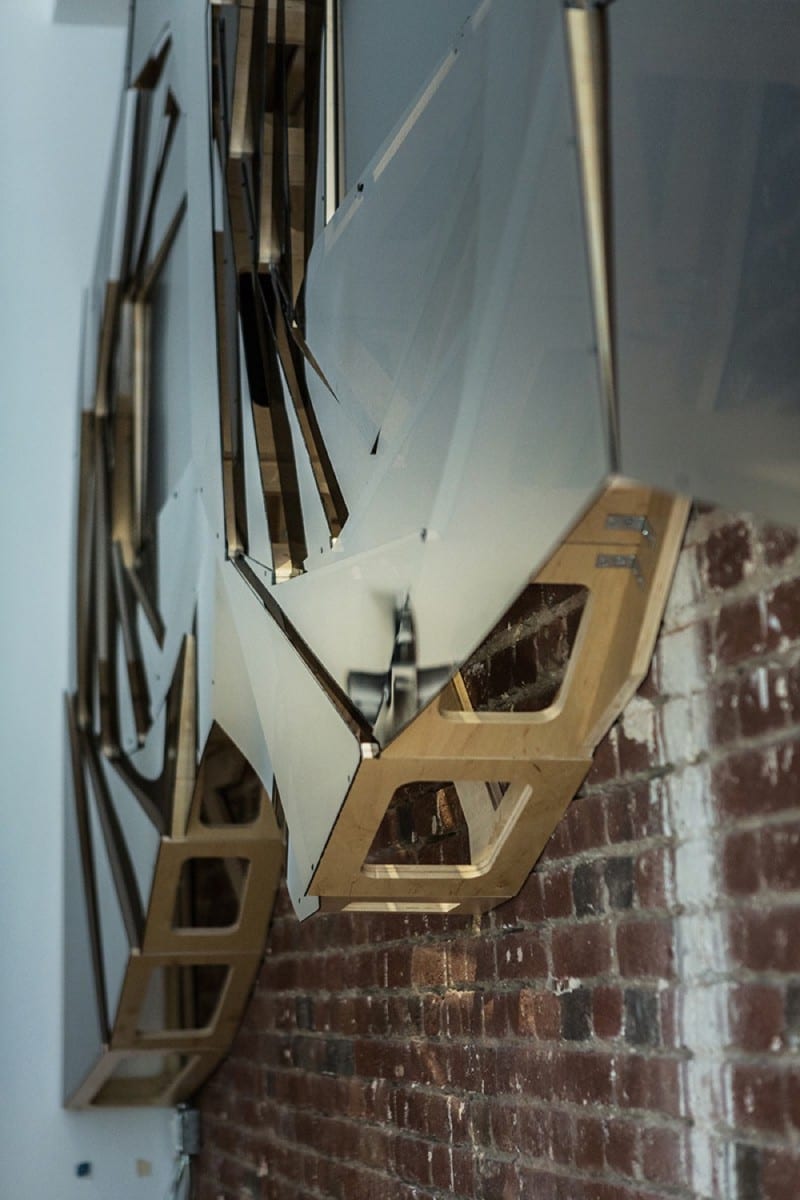
As you move around the room you capture glimpses of change. Light reflects under different angles, transforming the spectrum as it bounces through the smoky panels. The staggered panels twist and turn around the LCD screens expressing movement and dislocation. Fragments of the masonry wall behind promenade their way through the installation and are at moments revealed and sometimes hidden.

The installation allowed me to test some of the ideas that I’m developing for the future large-scale work.
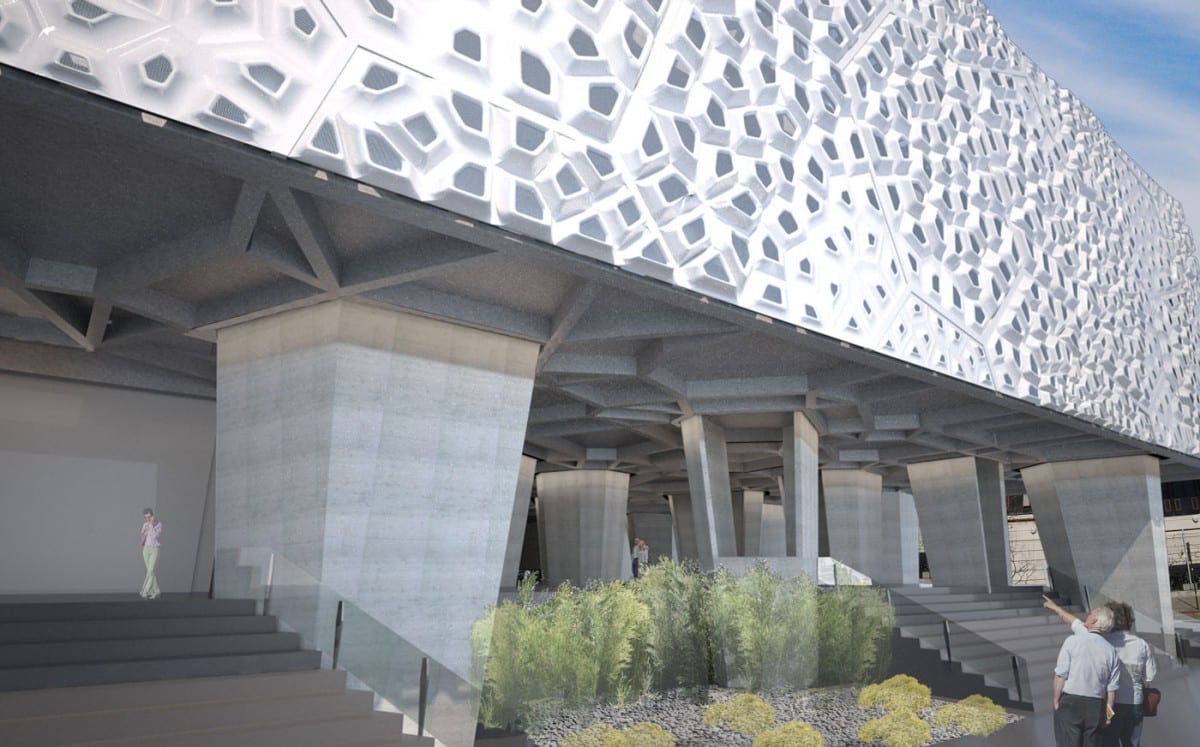
I recently designed a comprehensive enclosure system, a façade and building structure made of fiberglass composite.
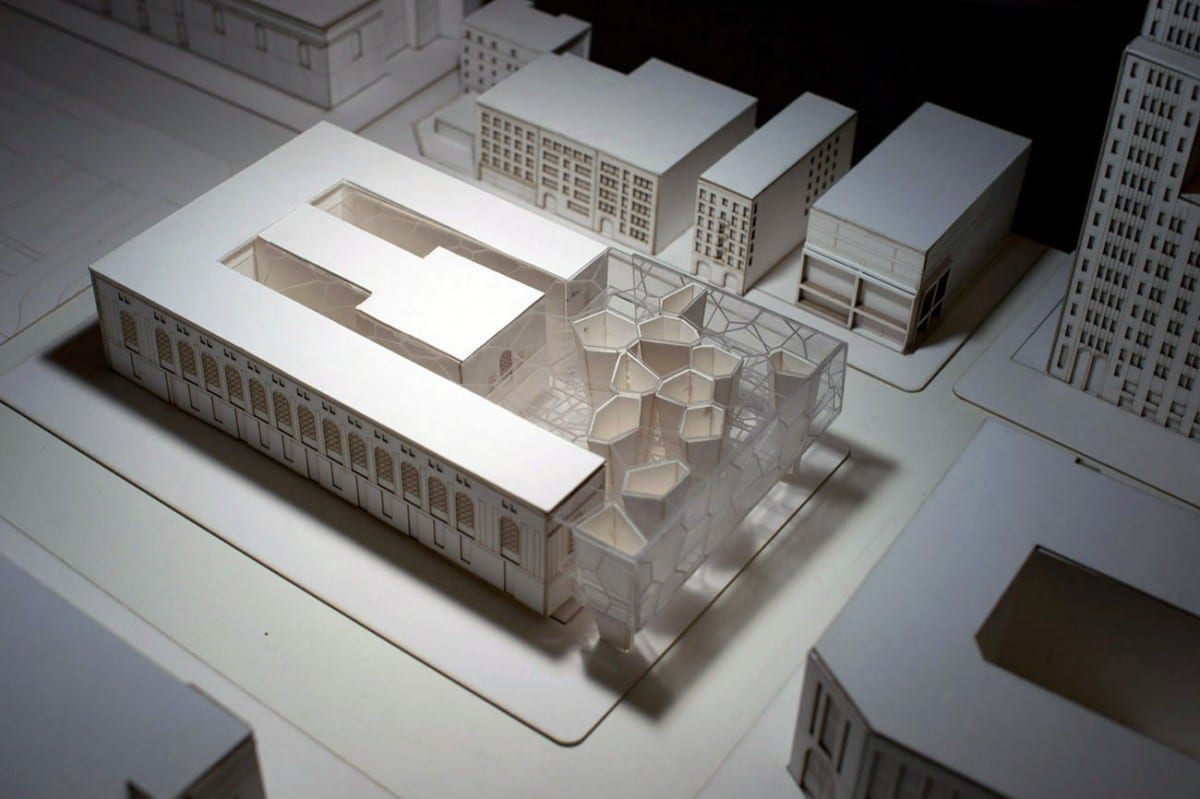
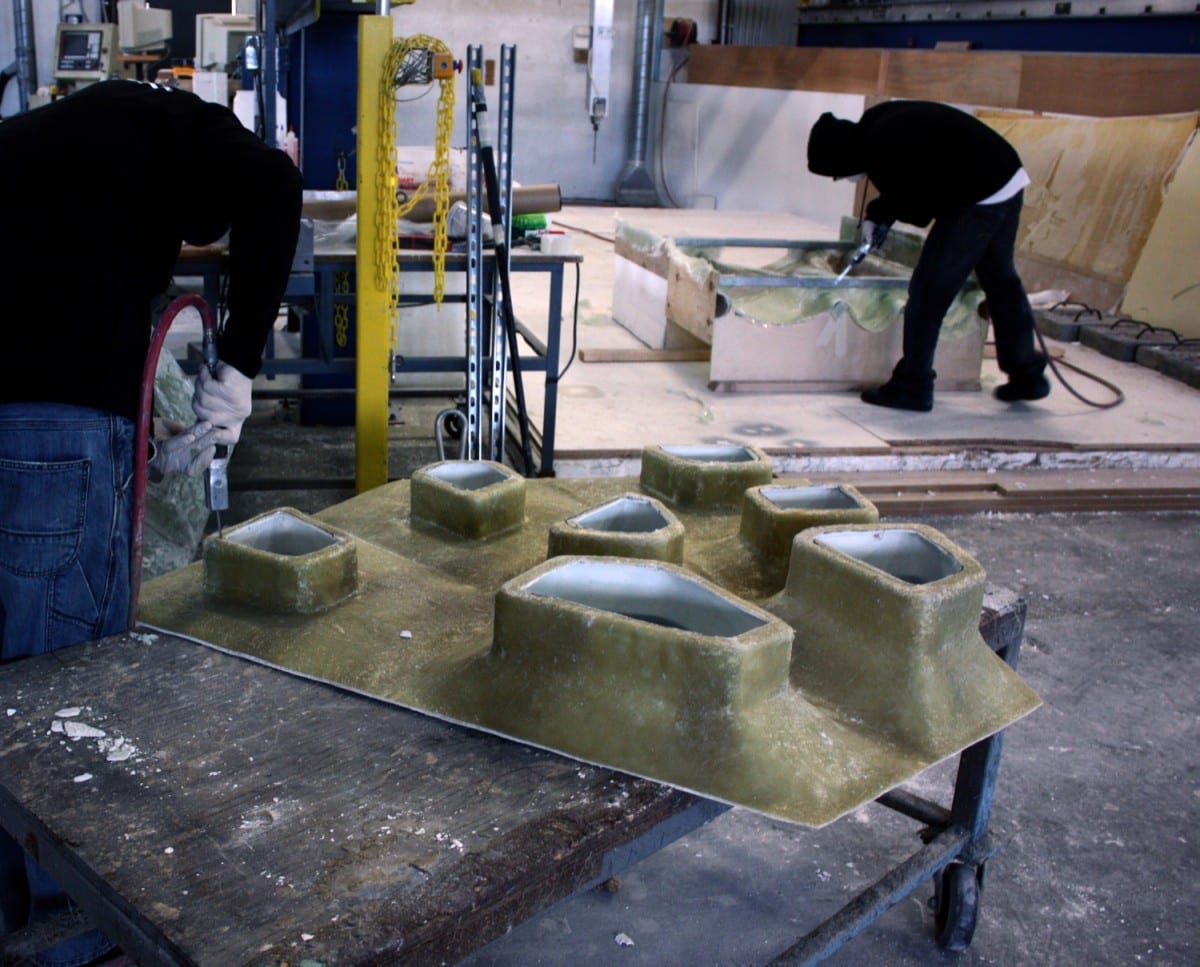

Modules are intended to be manufactured off-site and shipped to the construction site, and then installed. A group of components become a part of the assembly.



The cellular make-up can be traced in the project across many levels and performing from field to object. It’s worth noting that rapid prototyping tools and computation software open entirely new possibilities and horizons for contemporary designers. When you are operating on a larger scale it requires you to be strategic about the variations and change. In many cases, I search for off-the-shelf components that could be modified, tweaked and transformed, or hacked. I can get large-scale effects by creating small and local changes in the system.
Featured Image: Andrei Hakhovich (Gradient Matter), Branching Table, photo by Olga Tsibulina ©gradient matter
